To cross or not to cross? The sambar isn’t quite sure. It also isn’t quite sure what to make of a car it’s never seen before. A car that isn’t a familiar Gypsy; a car that is noiseless and still. The big deer looks suspiciously at my strange, dark green compact SUV, its long ears flicking back and forth to pick up any unusual sound, but there is none. Then, it lowers its tail, a reflex action when its perception of a threat, too, is lowered, and slowly tiptoes across my path before disappearing into the thick foliage. Ensconced in the driver’s seat, all I can hear is my own breath, which is momentarily taken away by this magnificent large deer.
Driving through a forest and having wild animals cross your path is an incredibly surreal experience. And what I am doing is something that’s never been done before; it’s even historic! For the first time ever, I’m taking an EV into the core of the Satpura Tiger Reserve. Yes, the Nexon EV I’m driving is the first all-electric car to enter this enchanting sanctuary, but it certainly won’t be the last. The twin benefits of zero pollution to protect the pristine forest, and no engine noise to disturb or scare away the animals, makes using only EVs for safaris a no brainer. Which is why it seems shocking (pun intended) that EVs aren’t universally used in wildlife parks. Okay, two years ago, the Tadoba National Park started running a fleet of modified Mahindra Supros with small electric motors and a basic 72V architecture, but these improvised cargo vans with the top cut off aren’t the real deal.
So which EVs are suitable for a safari? Sadly, none. With the EV market in India still in its infancy, there is simply no all-electric option that can effectively swap out the long-soldiering Gypsys whose replacement is long overdue. Today, there are no more than a handful of electric cars you can buy and the Nexon EV is one of them. It’s also the most popular and affordable electric car in the market today, which is why we’ve brought it along to make the case for EVs in wildlife parks. In fact, that’s the whole idea about this drive – an idea L Krishna Moorthy, the very forward-thinking and progressive field director of the Satpura Tiger Reserve mooted (see box). In fact, Krishna Moorthy is proud of the fact that all the electricity requirements in the reserve are generated by clean and sustainable solar power, and hence it was only fitting that we explored this reserve in something that is equally non-polluting with a negligible carbon footprint.
Jungle Charge
We pick up the Nexon EV from Varenyam Motors, the Tata dealership in Bhopal it has been left to charge at overnight. But some interruption in the power supply at the dealership meant it was charged only to 92 percent. Uh oh. Eight percent is a lot in EV terms and can make the difference between getting home or getting stuck, but a quick calculation told us that even with a poor-case range of around 180km (the Nexon EV achieved 208km in our test) we’d have enough juice to reach our destination some 140km away.
It’s a pretty straightforward drive from Bhopal to Forsyth Lodge, our home for the next three days, nestled just outside the buffer area of the Satpura Reserve. For the first 100km, it’s a nicely paved dual carriageway and the last 30km is single lane, with the final 5-10km a bit bumpy, but nothing the Nexon EV can’t soak up.
Exiting Bhopal onto NH46, traffic is rather sparse so it’s easy to hold a steady speed, and you would think that’s the most efficient way to drive an EV, but actually it’s not. With no regeneration by way of deceleration or constant use of the brakes to squirt a bit of charge back into the battery, range started dropping at a faster rate on the highway than whilst getting out of the city. Now I have enough experience with EVs on long drives, so I’ve learned not to get gripped by range anxiety because, in a crunch, there are several things you can do to boost range. Tyres play a crucial role and the low-rolling-resistance MRF Wanderers the Nexon EV came with did their bit at enhancing range. Bumping up tyre pressures also helps, as it reduces the rolling resistance even further and this, for me, has become a standard protocol with all the EVs I take on long drives. Another little technique I use to eke out range is to first, very, very gently accelerate to build up speed and then lift off suddenly, sometimes with a dab of the brakes, to feed some charge back into the lithium-ion battery. Switching off the air-con would automatically increase range by a good 10 percent, but I didn’t need to resort to any of these tricks, and we reached Forsyth Lodge with around 30km to spare.

There’s no fast-charging in this neck of the woods and it will be a long, long time before the Hoshangabad district sees such a facility. I’m making do with a good old-fashioned 15A charging socket, which does the job quite well. Deepanker Mukherji, the general manager of Forsyth Lodge, very kindly rigged a long extension cable from his house, and with a 24x7 power supply (Forsyth has a power backup generator), I can check in and relax with the assurance that, in around nine hours, the 30.2kWh battery will be fully topped up.

Haven In The Woods
Nothing beats the joy of flopping into a cold, clean, cozy and comfy room after a long and hot day’s drive. In fact, the massive double bed in my room is so comfy that I made it a point to note down the make of the mattress. The bathrooms are huge, with big rain showers that are ideal to wash away the dust after a safari.
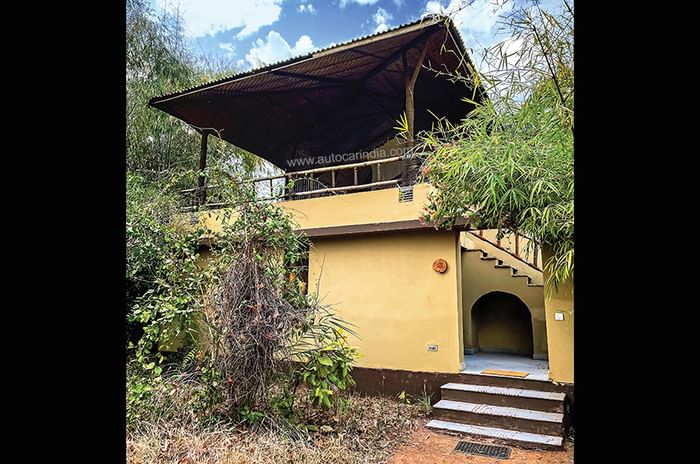
Forsyth Lodge will be our haven for the next three days. Spread out over 44 acres, of which only 10 acres are built-up, there’s a lovely, natural jungle vibe about this place, which is core to its charm. With just 12 cottages in such spread-out surroundings, you are naturally socially distanced, and the limited number of guests this lodge can take means you don’t have to deal with a gaggle of people even in the common areas.
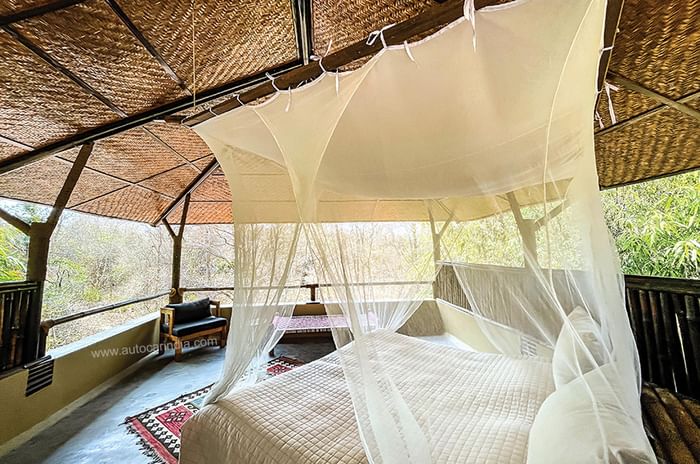
The plan is to explore the buffer zone the next day, but to our dismay, the park is shut because of a weekend lockdown imposed across Madhya Pradesh. As it turned out, it wasn’t a wasted Sunday. I enjoyed just hanging around Forsyth Lodge, which has a delightfully rustic feel. Aesthetically designed mud cottages blend in with the surroundings and when you step out onto the verandah of your room, you feel like you’re in the wild, with dense foliage all around. I spotted a family of wild pigs foraging not far from my room. Want to be even closer to nature or the animals? You can sleep in the machan suite on top of some of the cottages. Your morning alarm will be the loud chirping from a dazzling variety of birds and, if you’re lucky, you could have a leopard join you for morning tea!
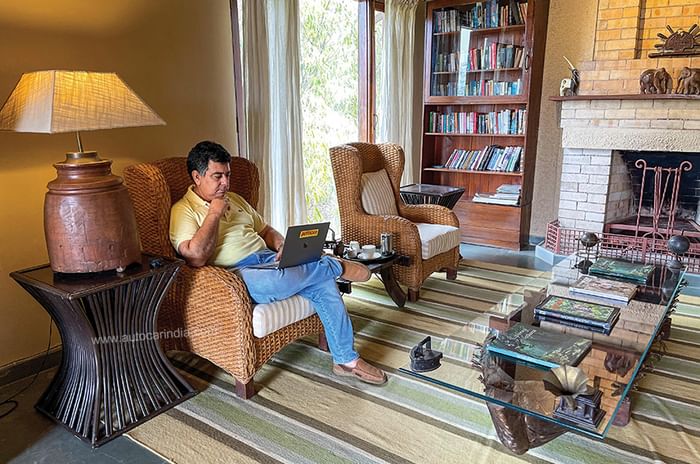
Common areas in Forsyth Lodge, too, are very tastefully done. The décor of wood, bamboo, stone, brass ornaments and earthy fabrics has a natural feel to it. There’s not a concrete structure in sight. There’s no Wi-Fi or TV and no plastic bottles either. You can tell this place is run by people who genuinely love nature and the environment. Like-minded guests will fall in love with this place too. And the food is to die for. It’s not fancy, but very tasty and you won’t be able resist chef Krishna’s outstanding desserts.
Another good thing about having a relaxed Sunday at the lodge is that I got a chance to have a good rest before two very long days in the vast Satpura Sanctuary, which began at 4.30am.
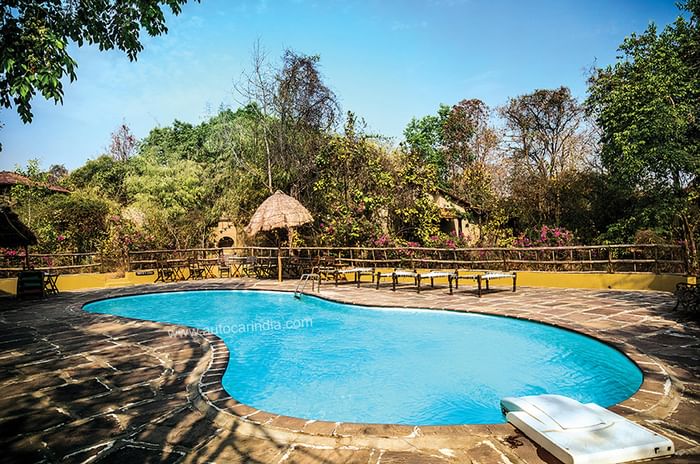
To enter the national park, all visitors must take a boat to cross the Denwa river, before jumping into one of the Gypsys that are controlled by the park authorities. The park is quite strict and doesn’t allow too many vehicles inside the core area, which is accessed from the Madhai gate.
The Denwa is a natural boundary that separates the buffer and core zones in Satpura. The core is completely natural and untouched, with no human habitation, other than temporary camps set up by forest officials to monitor the area. The idea is to allow wildlife in the core zone to live and roam naturally and freely. To drive inside the core area, we have to take a circuitous 30km detour and cross over the Denwa at its narrowest point. Tot up another 40-50km of driving within the core and I’ve calculated a total maximum distance of 110km each day. So, range anxiety is not going to be a problem. Tiger anxiety is! It’s this majestic big cat that everyone, including myself, who comes to a wildlife park wants to see.

It’s daybreak and the forest has come alive with the chatter of hundreds of species of birds. The spectacularly beautiful terrain unfolds itself in the morning light and the way the landscape dramatically changes as you drive through is what sets Satpura apart from other national parks.
Surreal Satpura
From the wide and open sandy banks of the Denwa, we enter a dense, undulating jungle, which even in April has a thick tree cover. It’s here that I begin to appreciate two things about the Nexon EV. First is the instant torque from the 129hp motor, which makes scurrying up steep inclines really easy, and the second is the compact dimensions that proved a boon on the narrow forest trails. The trouble was that the displayed range figures would fluctuate wildly. The range would suddenly drop by 20 or 30km if you floored it, but equally, a light throttle application would claw back the indicated range. So, throughout my drive, I had one eye on the wildlife and the other on the range meter, but range itself was never a problem.
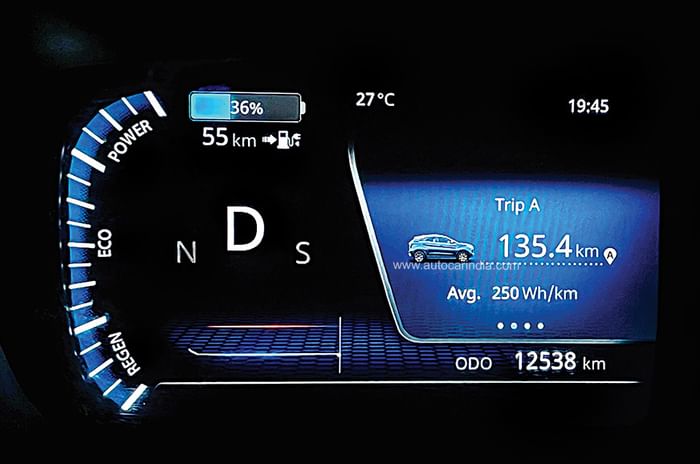
Our first sighting is a family of langurs, which looked at us curiously and provided a good photo op, but it’s the sambars we spotted next that gave us the first thrill of being in a wildlife park. Deer are easily frightened and they looked suspiciously at this strange-looking vehicle that made no sound, but the massive Indian Gaur we came across were totally unfazed by the Nexon EV, lazily walking past without a care in the world. As the day went on, we saw wild pigs, chital and a dizzying amount of birds, from the tiny tailor bird to big peacocks. The prized sighting was an Indian scops owl perched in a Mahua tree. But what about the big prize?

Our tracker Vineith Mahadev made a massive effort to find us a tiger, but we knew the odds were against us. Firstly, the closure of the park the day before meant that the last sighting was, at best, over a day ago, and of no use because the tiger would have definitely moved away from that location. The way it works is that the location of tiger sightings the evening before are passed on, so those going on safari the next morning can look around the same area and, chances are, the tiger will still be hanging around there. Another challenge is that the summer heat had well and truly set in, with the temperatures crossing 40degC. Now some experts say that summers are the best time for sighting, because the big cats hang around water holes to cool themselves, but equally, once it gets too hot, they retreat into the shade and snooze the whole day. So you have a very small window for good sightings, from dawn till around 9am, before the heat sets in. So we never got to see the elusive tiger, but quite frankly that would have only been a cherry on this beautiful cake, or should I say park, which has so much else to offer.
In fact, the hunt for the Tiger was the most enthralling bit for me, because Vineith took us to some of the most remote and beautiful parts of the park, with wildlife all around us. Gliding noiselessly across unspoiled green meadows, with chital grazing in the distance and rocky hills as a backdrop, is the most idyllic drive I’ve done in a long, long time.

The going was tough in parts and I have to say the MRF Wanderer tyres helped cushion a lot of the shocks. I was worried about punctures, but thankfully the sharp rocks and stones didn’t penetrate the beefy tyre sidewalls.

It was here that the Nexon’s ground clearance was put to the test. Compared to a regular Nexon, the EV’s clearance is reduced because of the battery in the floor, and driving on forest trails with tall grass lining the track, I did, on quite a few occasions, crunch over hidden rocks. But, with no oil sump to puncture and no transmission casing to damage, I knew at worst I would give the car back to the dealer with a few bruises to the underbody. It’s when you drive the Nexon EV in these conditions that you realise that the chances of mechanical damage on an electric car are fewer. You also realise how appropriate an EV is for a safari. You feel good when you don’t have an engine idling away and spewing global-warming CO2 into the atmosphere when you’ve stopped for a sighting. You feel good when you can drive with only the sound of fallen leaves and earth crunching under your tyres, and above all, you feel good because you are leaving in the knowledge that you enjoyed this piece of heaven on earth in the cleanest and most environmentally friendly way.

It was just as the sun set behind the hills and we started making our way back to Forsyth that Vineith heard the warning call of the langur. His telescopic eyes scanned the rocks, and in the distance, there it was. A large leopard, hunkered down, staring at us, before slowly slinking away. What a wonderful sight and what an end to a wonderful day.

As for the Tiger, sometimes the best is left for another visit. Yes, in those immortal words, “I’ll be back!” AI
Q&A L Krishna Moorthy, Field Director , Satpura Tiger Reserve
How important is green mobility in the Satpura Tiger Reserve?
It is very important and the reason why we have hosted you here is to highlight the importance of pollution-free vehicles. There is a great need to go in for green technologies, particularly in the safari sector. EVs don’t pollute and they don’t make noise, so the animals don’t get disturbed. Hence, these kind of vehicles allow guests to experience wildlife viewing and sighting in a better way. Right now, we don’t have appropriate vehicles, but with this activity we want to highlight the need for EVs to be used for safaris. We are very proud of the fact that we use solar power in the entire park, as we are committed to reducing the carbon footprint in the park also.
Unfortunately, there is no appropriate EV right now for tourists to use on safari, but what is the total size of the market for such vehicles? Manufacturers would need a minimum number to cover the cost of development.
Currently, I think I can say for Madhya Pradesh that we have around 1,000 vehicles we are using for park safaris in different tiger reserves and in other sanctuaries as well. We should slowly replace these vehicles with EVs, so I think there is a scope in the future. The first step would be to modify any suitable existing vehicle for the 6+2 passenger configuration we need for safaris, but cost is an issue. Once the cost factor is taken care of, I think national parks will switch to EVs.
How important is four-wheel drive in parks like this?
You’ve seen the Satpura Tiger Reserve – it is hilly terrain and quite slippery and slushy, particularly after the monsoon, and tourism starts from October. So, in that period, you must have four-wheel drive, otherwise it is not possible to drive in this hilly terrain.






















.jpg?w=728&q=75)














